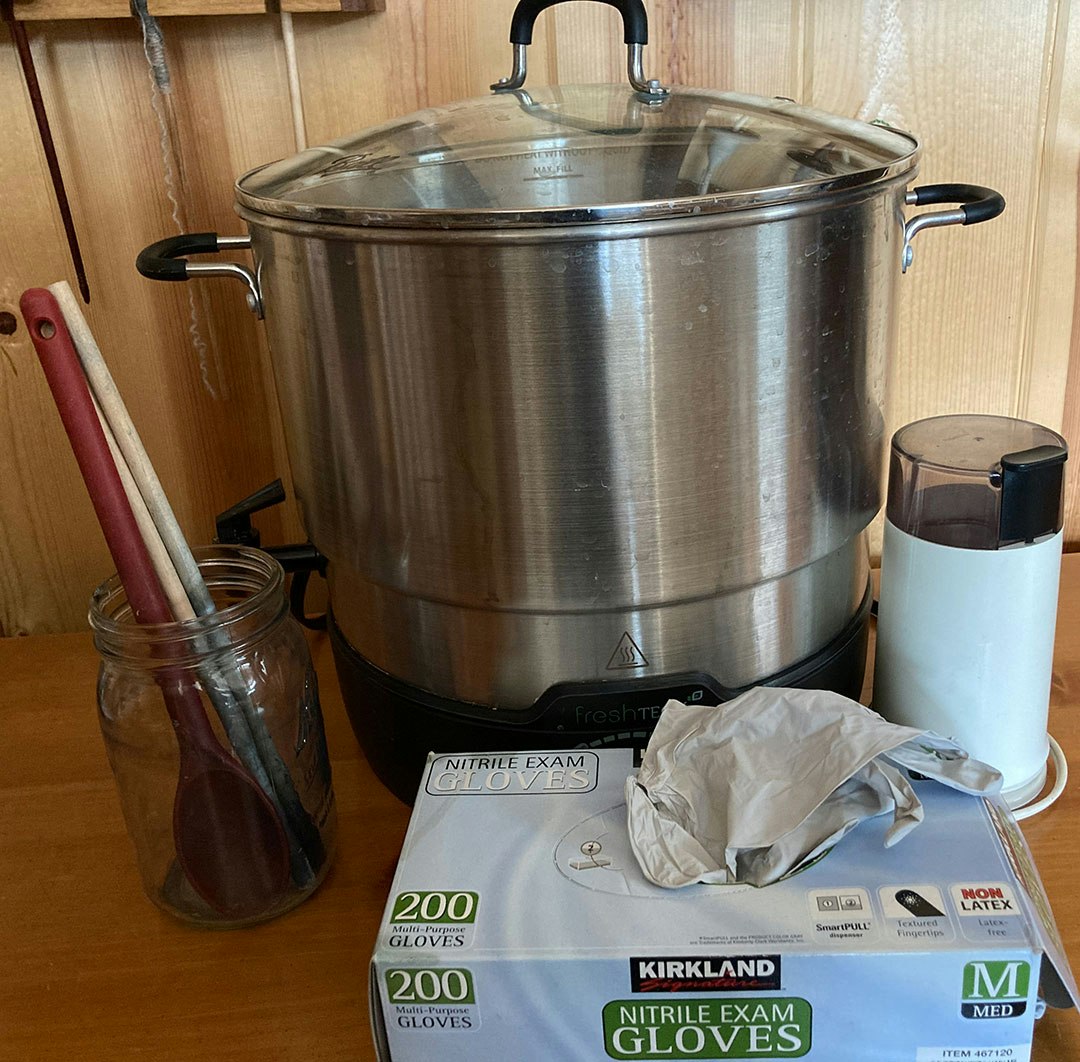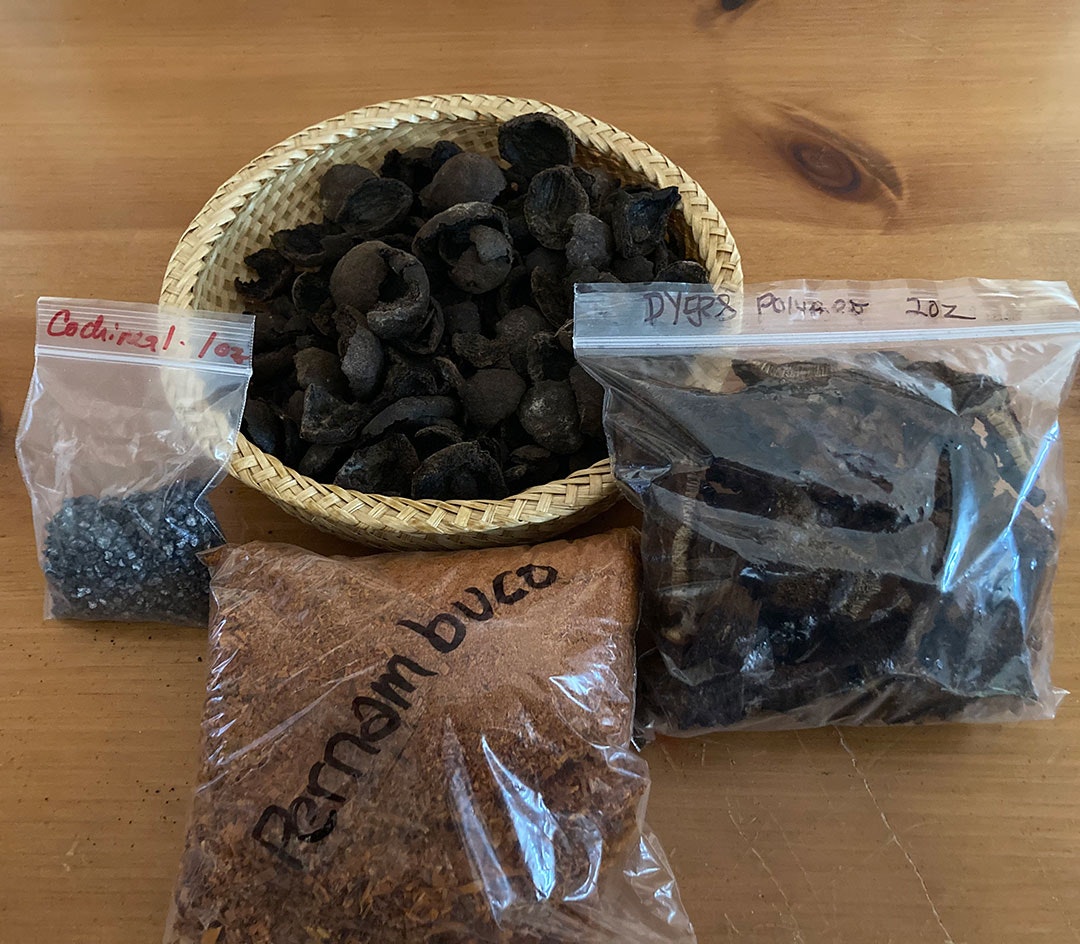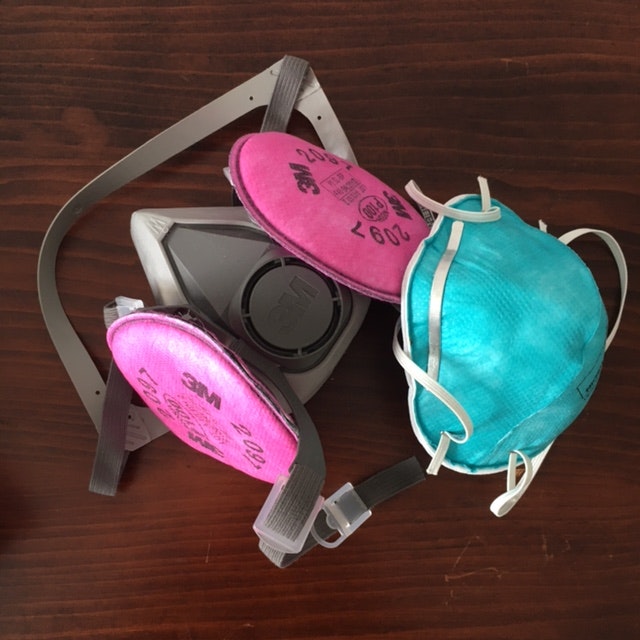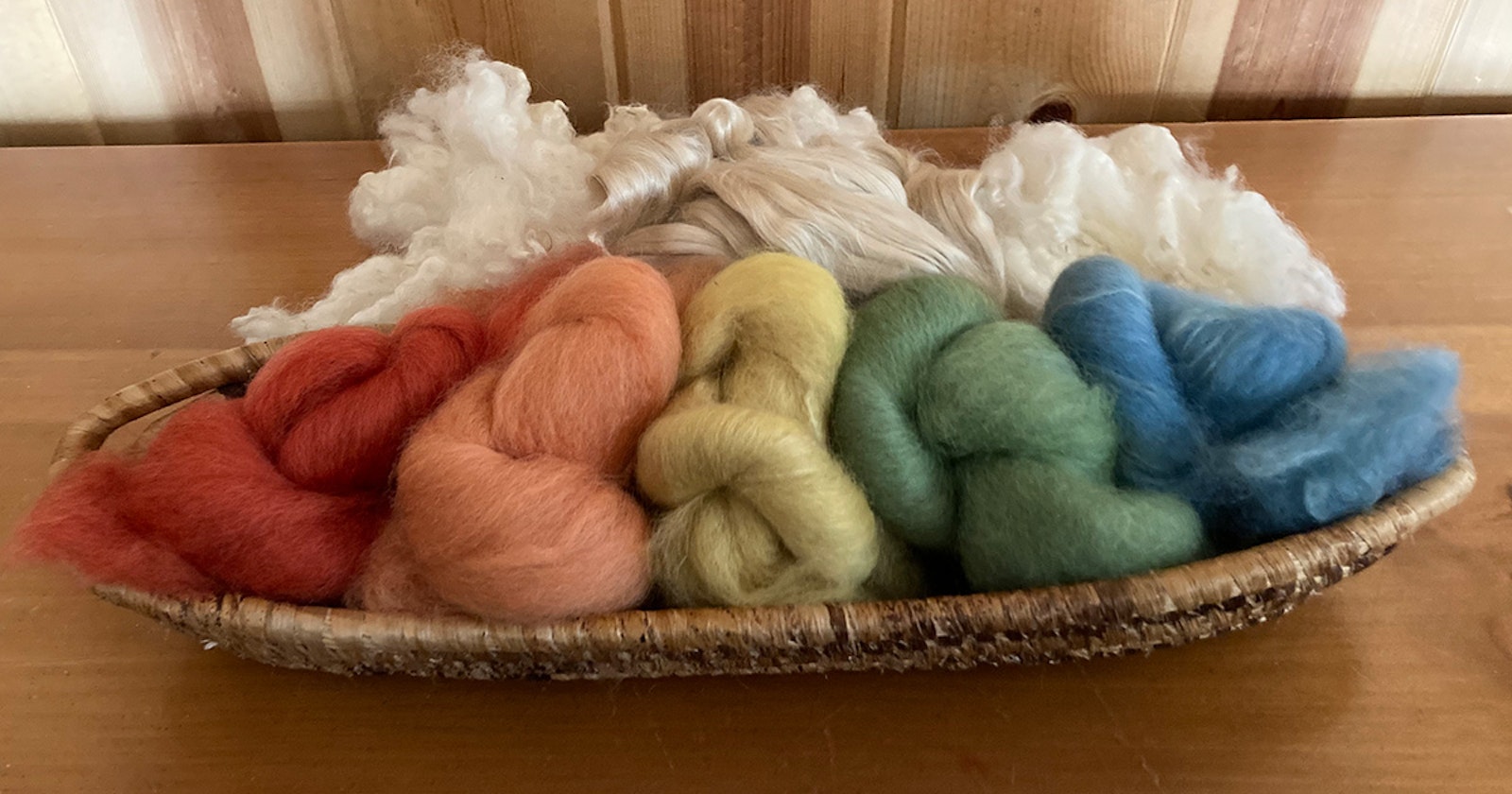I love working with naturally colored fibers, but I also enjoy using leaves, roots, hulls, and insects to bring bright colors to my spinning. I appreciate the history, the connection to natural materials, and the challenge of working with natural dyes. But it’s good to remember that just because materials come from nature doesn’t mean that they are totally safe, and there are some commonsense precautions that dyers can take to prevent possible health repercussions. Here are some of the things to keep in mind when dyeing at home.
Use Dedicated Dyeing Tools
Never use pots for dyeing or mordanting fiber that are used for cooking; devote pots used for dyeing to dyeing only. A dedicated pot for mordanting and dyeing fiber prevents possible food contamination. Find large stock pots or water-bath canners at garage sales and thrift stores at reasonable prices. It is important to also have spoons or stirring sticks, pot lids, and measuring tools reserved for dyeing and mordanting. I use an electric water-bath canner, which I can set up in the basement, keeping it completely separate from the kitchen, so I do not have to worry about cross contamination. This type of pot also lets me closely control the temperature.

Dedicated dyeing tools (clockwise from left): a jar of utensils, spoons, and stirring sticks; electric water-bath canner; a used coffee grinder for grinding dyestuffs only; and gloves
Store Dyestuffs Safely
Always clearly label everything you have collected or purchased for dyeing. Dried dye mushrooms can look like edible dried mushrooms. Some dye processes, such as indigo vats, use caustic, or extremely alkaline, ingredients, which if unlabeled, are difficult to identify in their powdered form. Mordants, which help fix the dye in the fiber, are also often unidentifiable in their powdered form. When in doubt do not guess—safely discard and purchase anew. Make sure that each dye, mordant, or vat ingredient is kept safely in a sealed, clearly labeled container and out of reach of pets and children. And always ensure that dyestuffs are stored away from herbs and ingredients intended for cooking.

Clearly labeled dyestuffs (clockwise from left): cochineal, walnut hulls, dyer’s polypore mushrooms, and pernambuco shavings
Personal Safety Precautions
I wear a mask and gloves every time I measure out ingredients for mordanting or dyeing fiber. This prevents me from inhaling anything that could harm my lungs, prevents possible exposure to anything that could damage my skin, and makes clean up easier. This way, if I accidentally touch some dye or mordant materials, I don’t have to stop and wash my hands, dry them, and get back to work; I can just change gloves. When working with indigo vats in particular, I always wear gloves. I use thiourea or lye vats and those are not substances I want on my hands. Even in a fermented vat, I wear gloves so my skin isn’t subjected to the high pH.

Wearing a mask, such as this respirator or a dust mask, protects a dyer’s lungs. Photo by Elizabeth Prose
During long, dark Minnesota winters, I treasure pulling out the fibers I dyed with summer’s abundance of dyestuffs. There’s enormous pleasure in using natural materials for dyeing, and it’s something that I encourage everyone to do. With a few simple precautions, natural dyeing is safe to do at home and will add color to your spinning life.
Devin Helmen has been immersed in fiber since learning to spin at age 8. They spin, knit, and weave in beautiful Minnesota. Devin enjoys writing and teaching about fiber arts and has a passion for spindles and everyday textiles. They blog, intermittently, at afewgreenfigs.blogspot.com.

